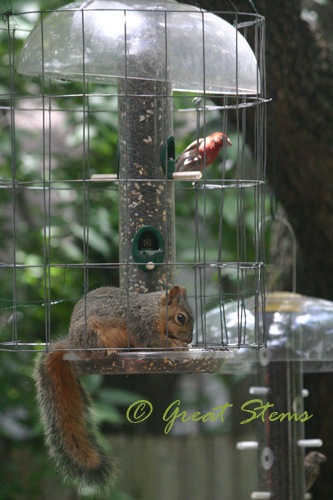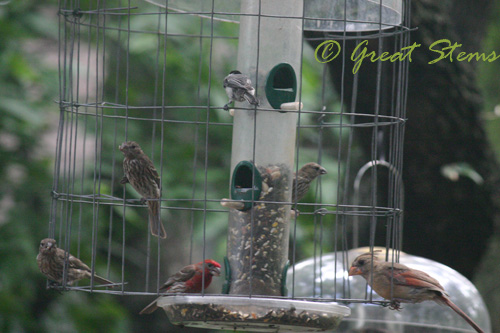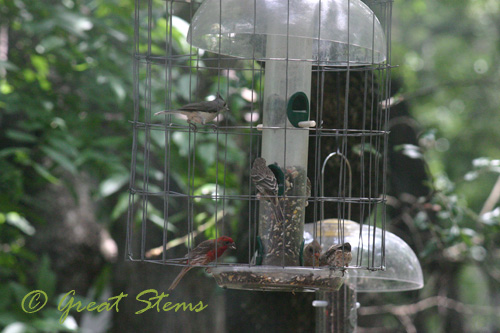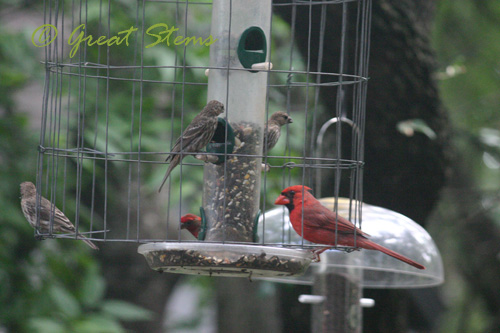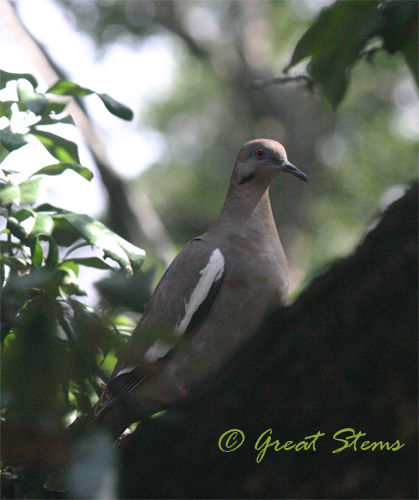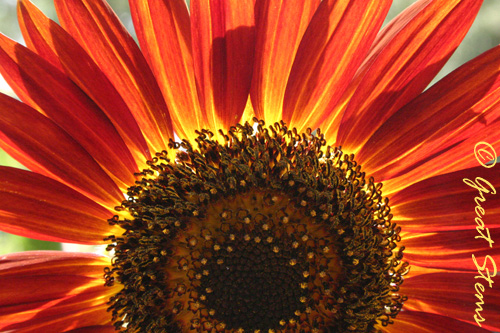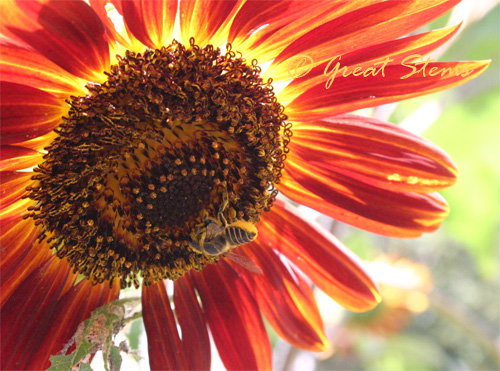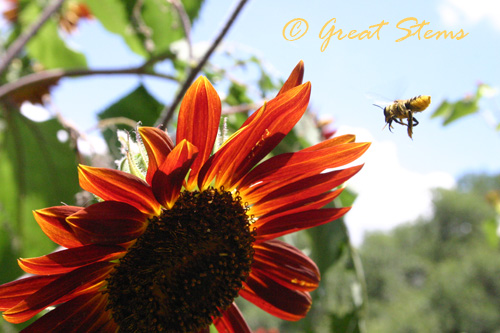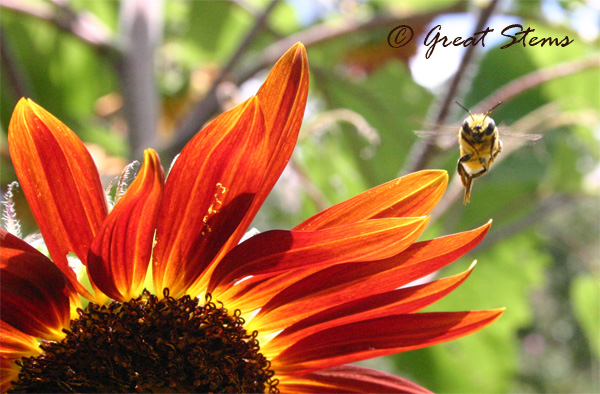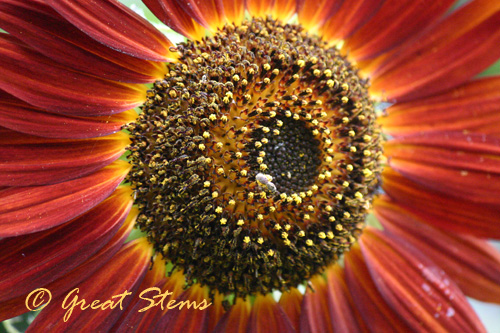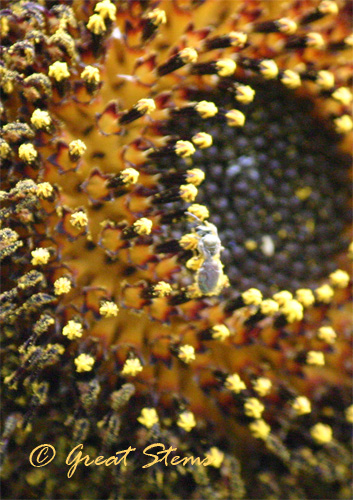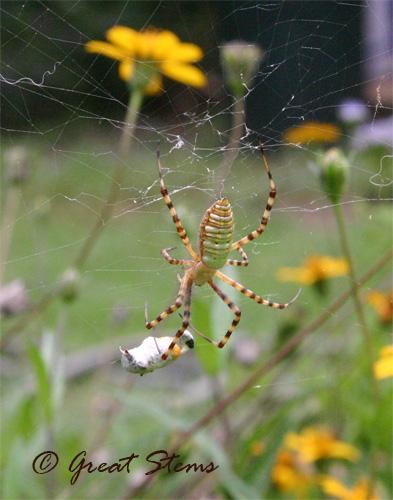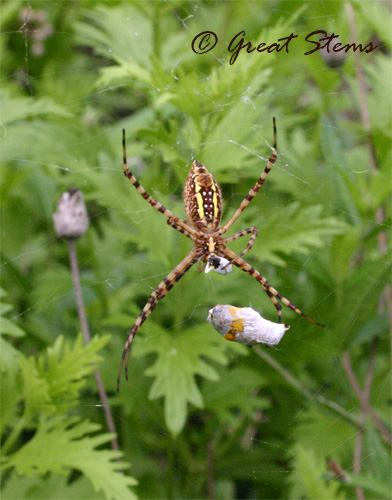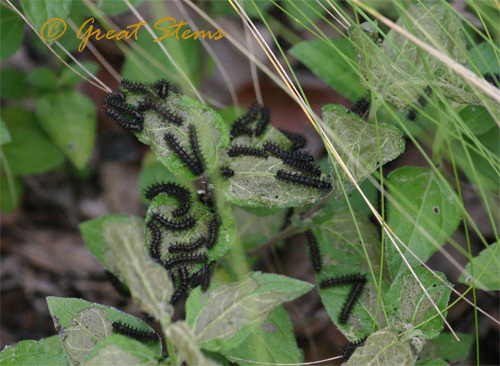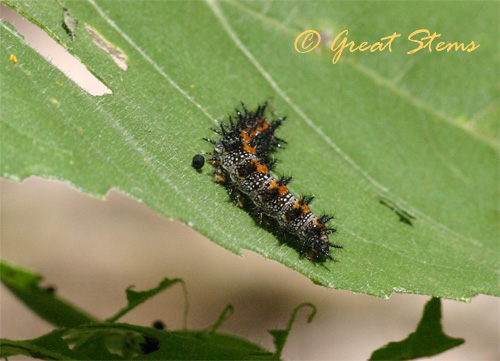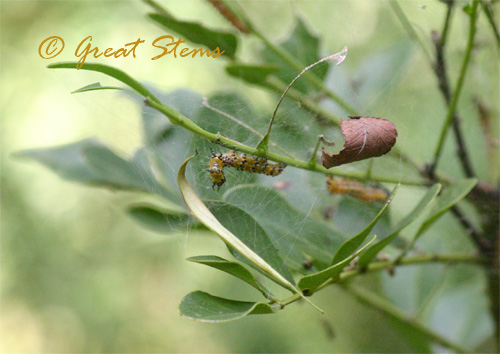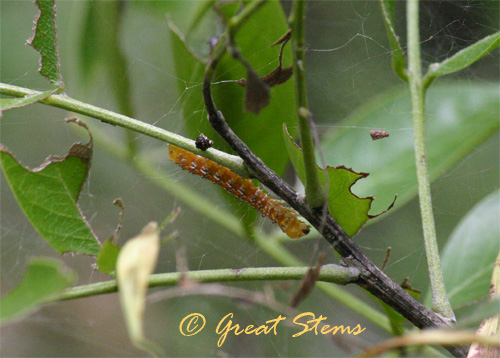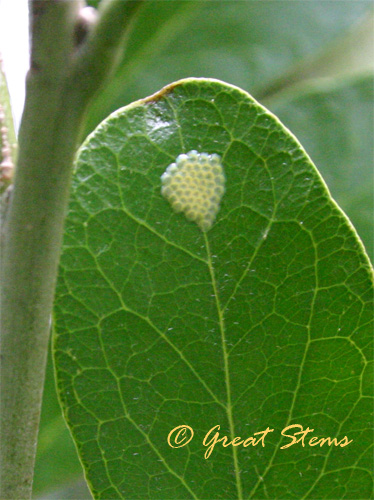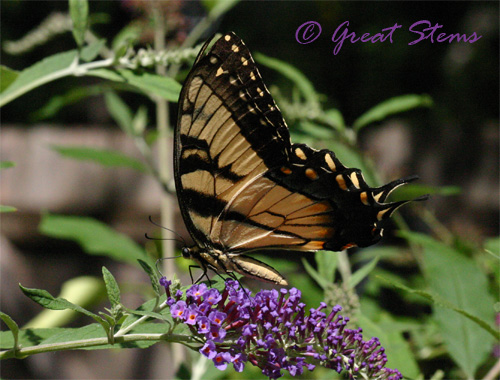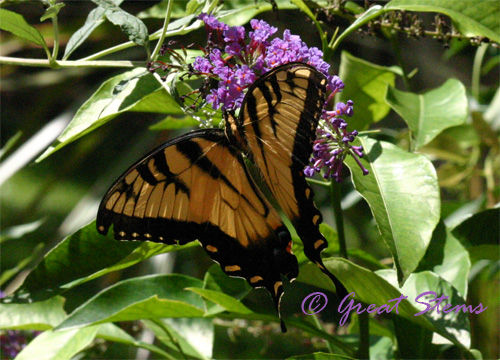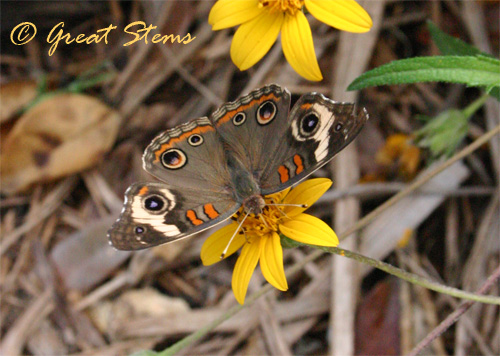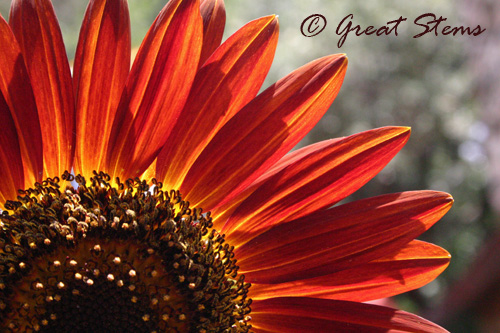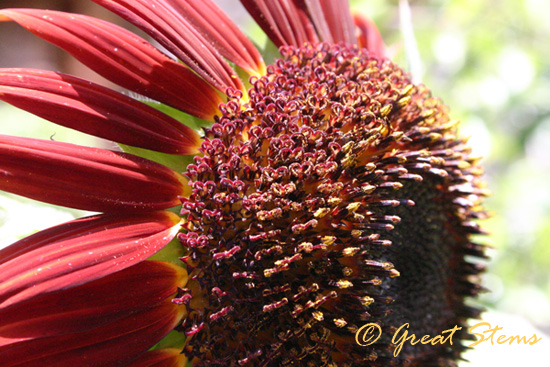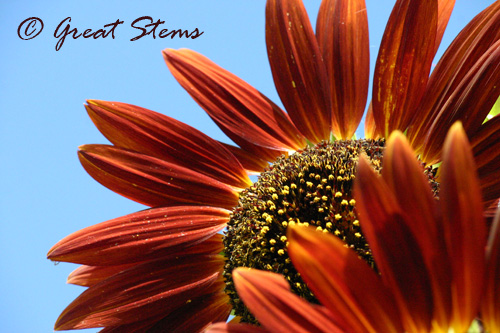It's not every day that one has a chance to do a good deed and lose some fingers in the process. But recently my neighbor Jan gave us that opportunity when she reported that she had saved a snapping turtle from a terrible fate that likely would have awaited it as it crossed the highway frontage road near our house. She named it Jaws, and appropriately so. Perhaps Jaws was a female who'd gotten lost after laying her eggs somewhere -- whatever the reason, the highway was no place for this turtle to be, and she was far, far from water.
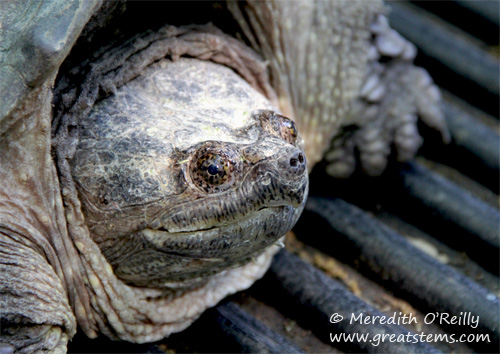 Jan carefully put Jaws into the back of her pickup and asked for assistance in getting the turtle back to the nearby pond from which it likely came. She jokingly offered to let me put it in my backyard pond. As much as I love wildlife, my hot-tub pond does NOT need a giant snapping turtle. Besides, with the turtle's sheer size and weight, it might have displaced all the water! Actually, we estimated that Jaws weighed around 30 pounds, a pretty good size for a turtle.
Jan carefully put Jaws into the back of her pickup and asked for assistance in getting the turtle back to the nearby pond from which it likely came. She jokingly offered to let me put it in my backyard pond. As much as I love wildlife, my hot-tub pond does NOT need a giant snapping turtle. Besides, with the turtle's sheer size and weight, it might have displaced all the water! Actually, we estimated that Jaws weighed around 30 pounds, a pretty good size for a turtle.
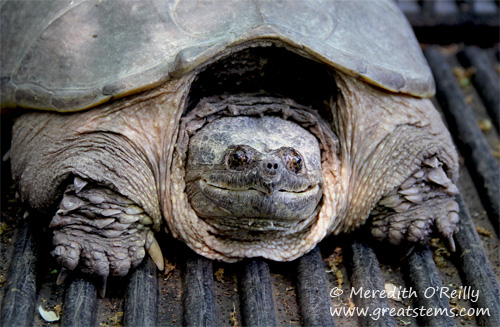
What a smile! As if it is daring us to get in range...
Wanting my sons to have all sorts of memory-making experiences with nature, I first asked them to join me to go see the snapping turtle and then asked my oldest son if he'd like to help get the turtle to the pond -- carefully, mind you. He said yes, then proceeded to spend quiet moments reflecting on all the ways he values his fingers.
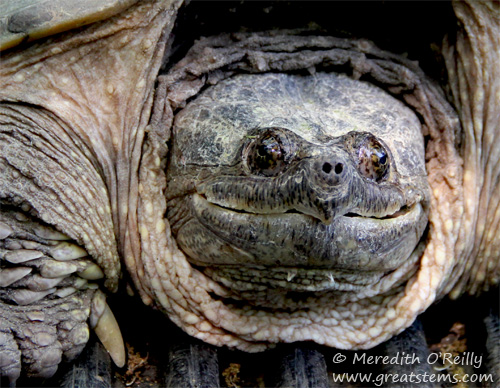
Closer, please.
Common Snapping Turtles are pure prehistoric awesomeness, as I like to say. They have so much body that they seem to ooze out of their shell, and that's one reason why they are so snappy -- they can't hide back in their shell in times of danger. But they actually are quite benign creatures overall -- the powerful jaws only come into play if they feel threatened (or hungry).
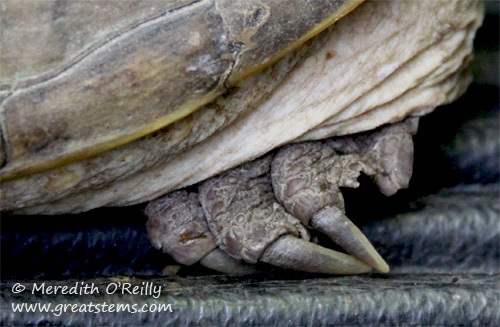 Look at the gorgeous claws.
Look at the gorgeous claws.
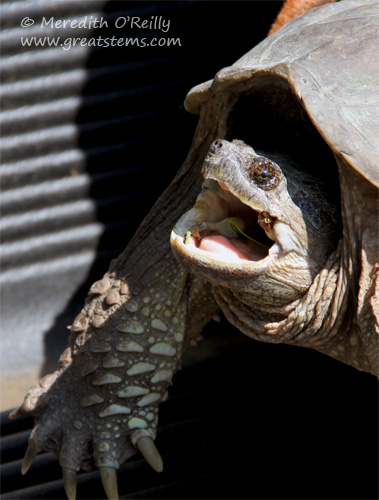 And the nifty plates on the legs -- a vision in armor. Actually, take a look inside the mouth, too. For one thing, you can see whatever plant part it munched on. But you can also see its wide tongue, one of the ways you can distinguish a Common Snapping Turtle from an Alligator Snapping Turtle. Just don't look TOO closely, if you know what I mean.
And the nifty plates on the legs -- a vision in armor. Actually, take a look inside the mouth, too. For one thing, you can see whatever plant part it munched on. But you can also see its wide tongue, one of the ways you can distinguish a Common Snapping Turtle from an Alligator Snapping Turtle. Just don't look TOO closely, if you know what I mean.
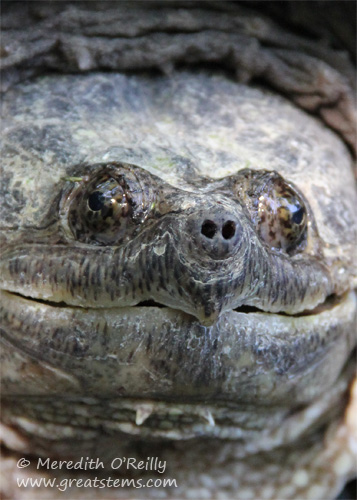 Jaws also had perfect little nostrils on the tip of its nose. Can you just imagine the turtle laying low in the water and muck, reaching its head up to the surface every once in a while to take a breath of air?
Jaws also had perfect little nostrils on the tip of its nose. Can you just imagine the turtle laying low in the water and muck, reaching its head up to the surface every once in a while to take a breath of air?
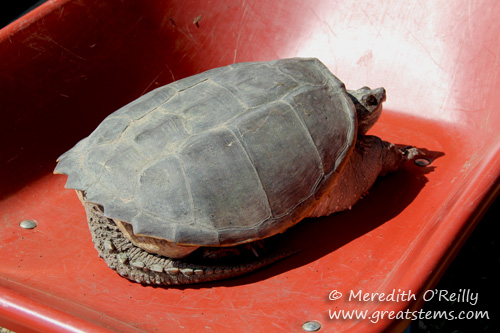 Another distinguishing characteristic of a Common Snapping Turtle is its long tail.
Another distinguishing characteristic of a Common Snapping Turtle is its long tail.
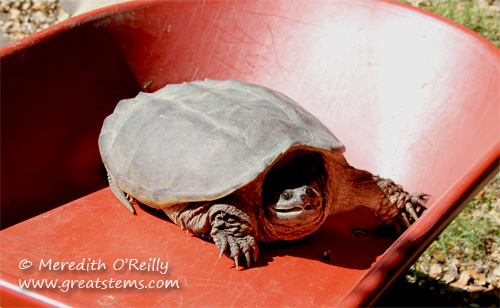 Look how it fills the wheelbarrow. Big girl. Or boy -- apparently you can tell by looking at the base of its tail, but sometimes such information isn't worth going after, haha. Keep in mind that a Common Snapping Turtle's neck is long and flexible, and this is what makes handling one such a risky venture. It can snap out forcefully and fast, sideways or vertically, in the blink of an eye.
Look how it fills the wheelbarrow. Big girl. Or boy -- apparently you can tell by looking at the base of its tail, but sometimes such information isn't worth going after, haha. Keep in mind that a Common Snapping Turtle's neck is long and flexible, and this is what makes handling one such a risky venture. It can snap out forcefully and fast, sideways or vertically, in the blink of an eye.
As much as I tried, I couldn't get a picture of just how fast the snapping turtle snapped its jaws outward while my son moved the turtle from truck to wheelbarrow and wheelbarrow to pond. Perhaps a wise person would have switched to video mode, but I feel certain that in that case the turtle would have caught fingers for real and then I'd have a Youtube moment, as well as extreme mother guilt.
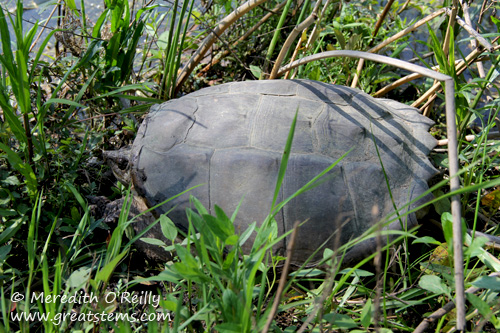 All things considered, I'm glad that Jaws has an aquatic home once again and that everyone still has their digits. Thanks, Jan, for watching out for our wildlife and to both Jan and Logan, you earn a Medal of Bravery. Me, I stayed behind the camera. For documentary purposes, of course.
All things considered, I'm glad that Jaws has an aquatic home once again and that everyone still has their digits. Thanks, Jan, for watching out for our wildlife and to both Jan and Logan, you earn a Medal of Bravery. Me, I stayed behind the camera. For documentary purposes, of course.

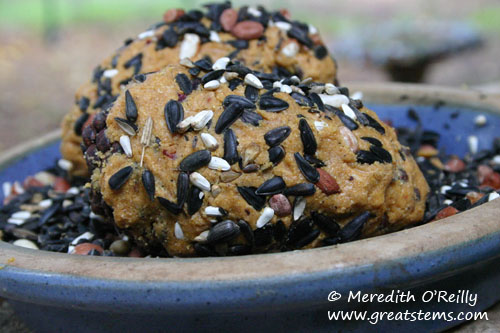
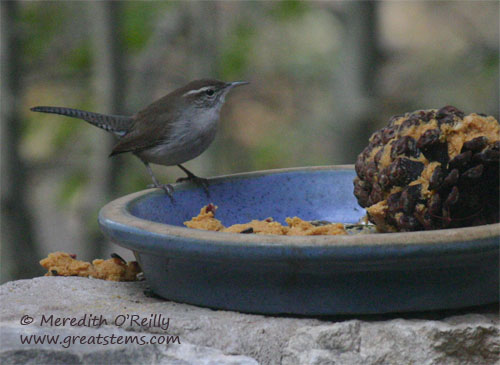
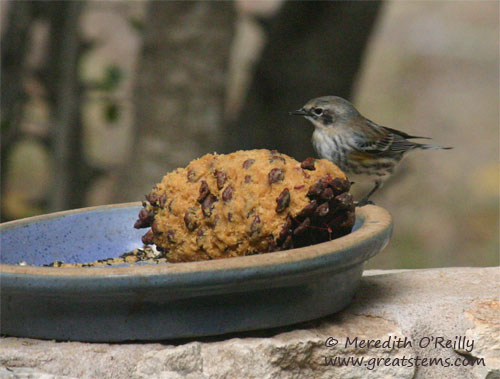
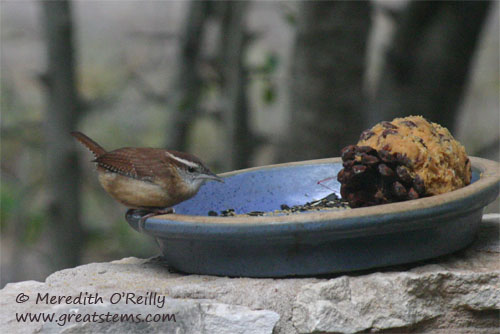
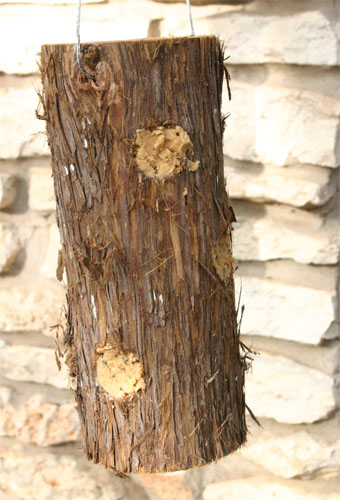
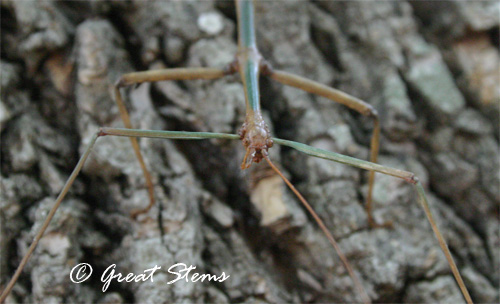
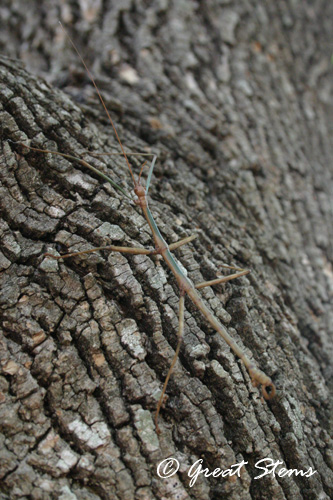
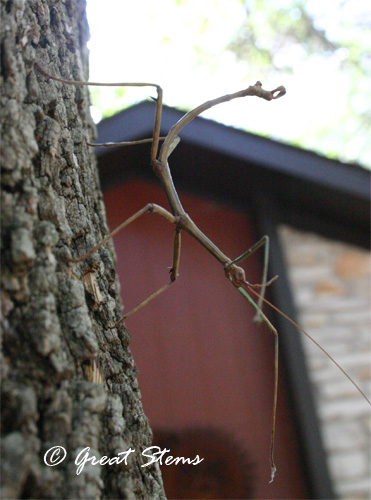
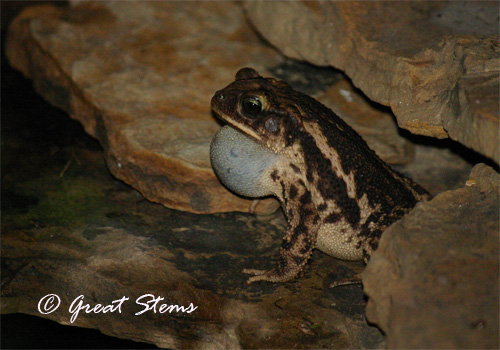 The male toads are singing each night, doing their best to entice a female for a dip in the pond.
The male toads are singing each night, doing their best to entice a female for a dip in the pond.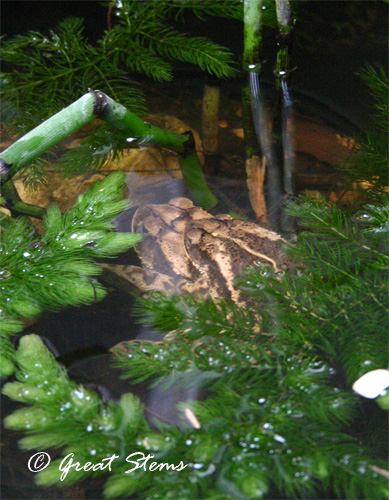
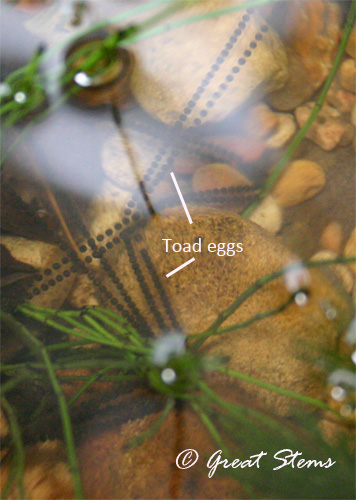
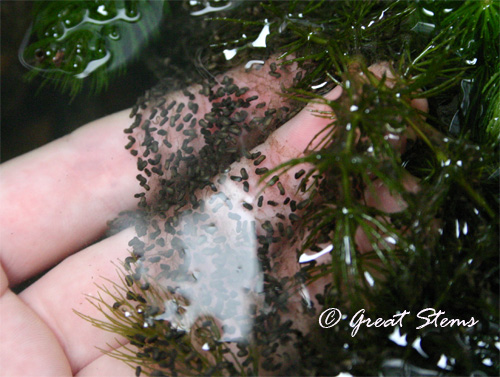
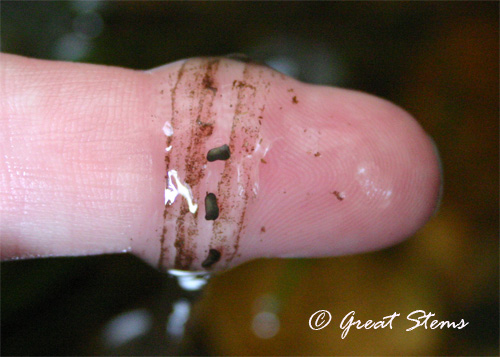
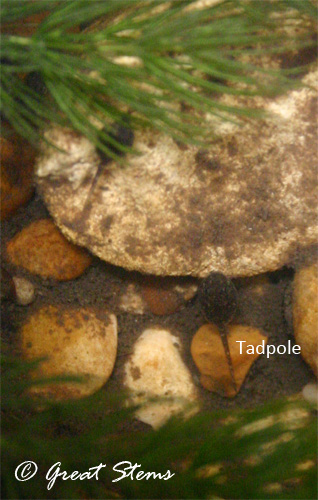 Despite the great numbers of eggs laid, very few make it to adulthood to live the life of a toad. They become food for other creatures, including the one below.
Despite the great numbers of eggs laid, very few make it to adulthood to live the life of a toad. They become food for other creatures, including the one below.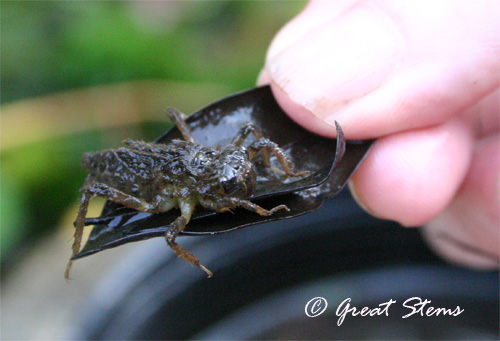
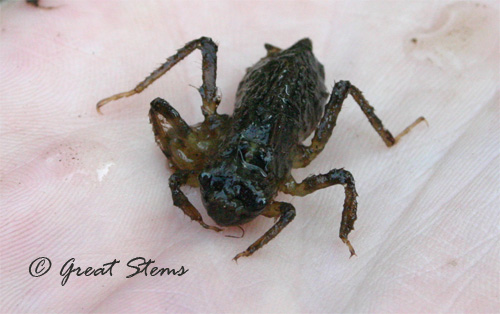
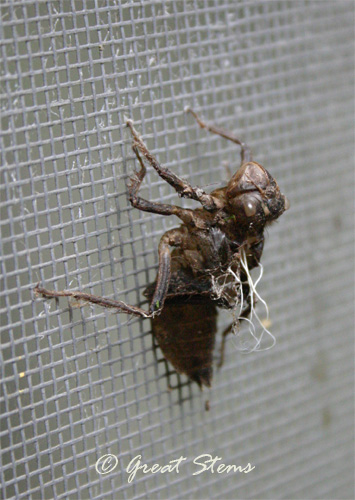
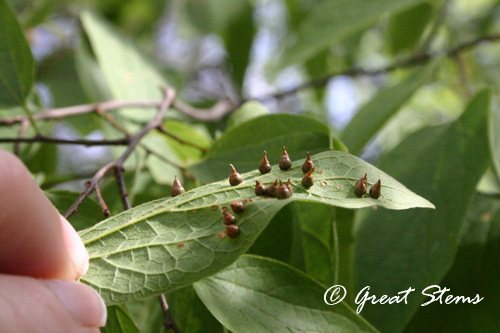
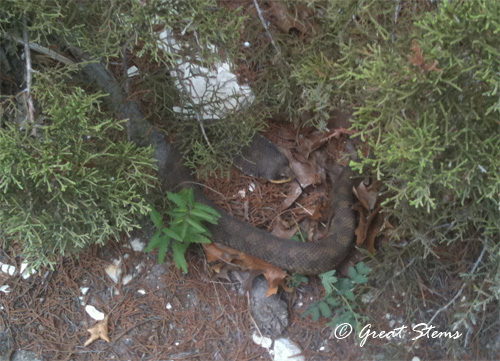
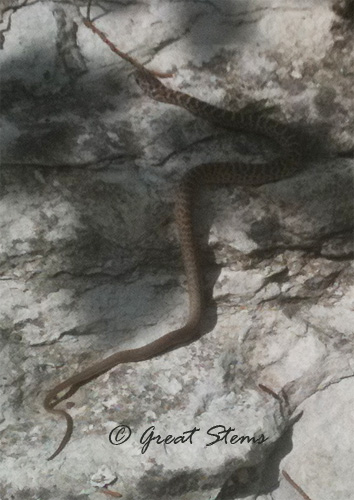
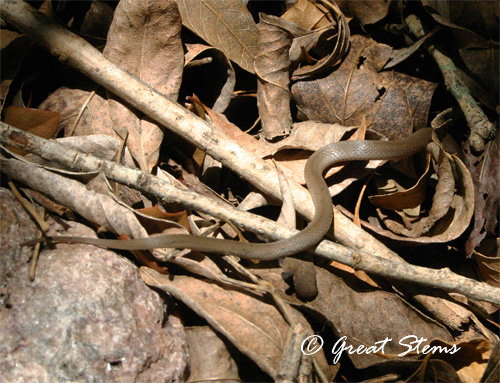
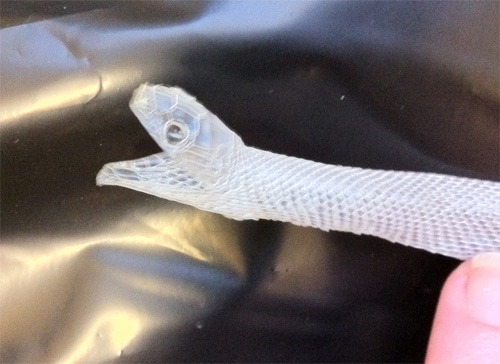
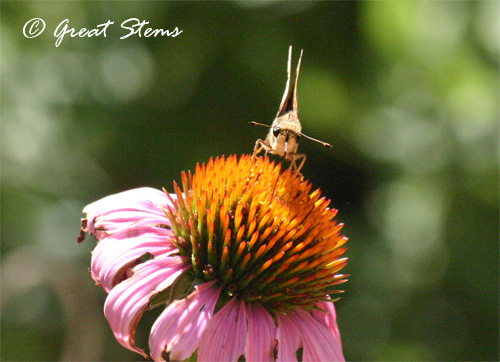
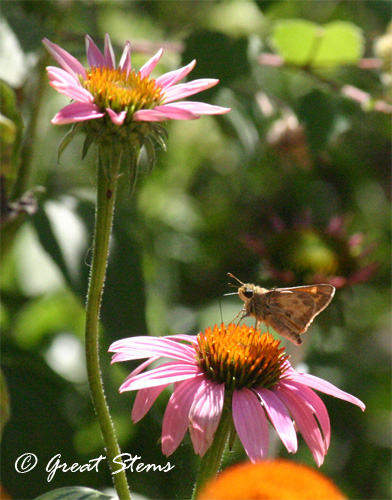
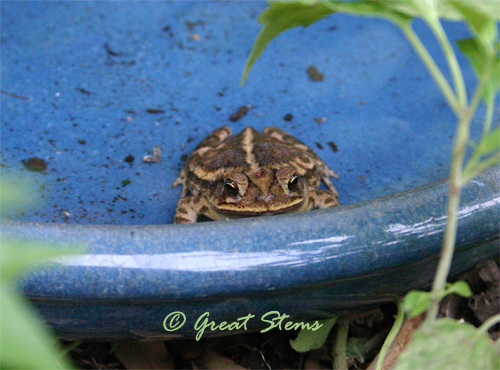
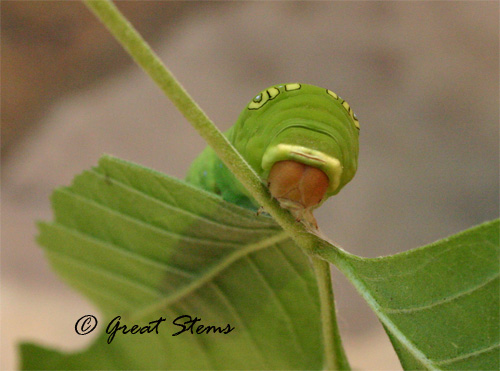
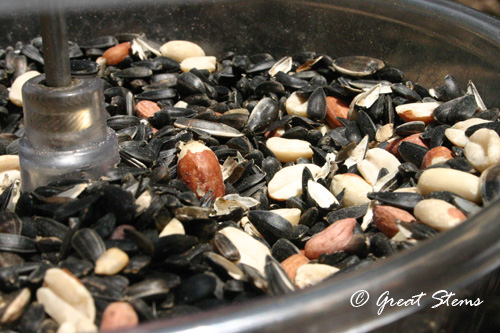
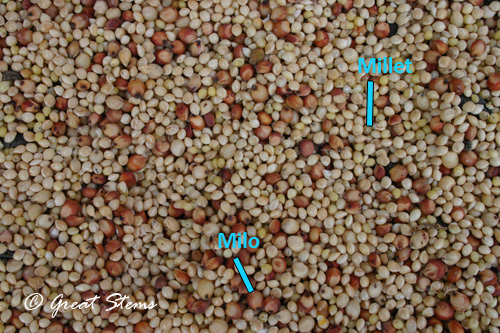
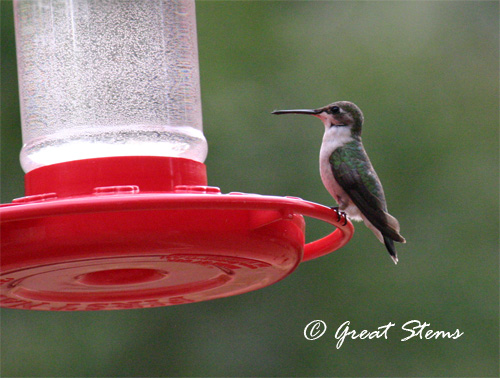
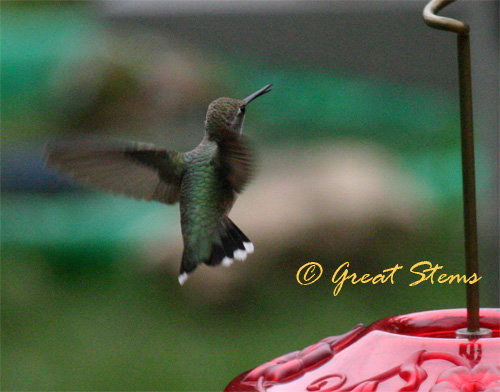
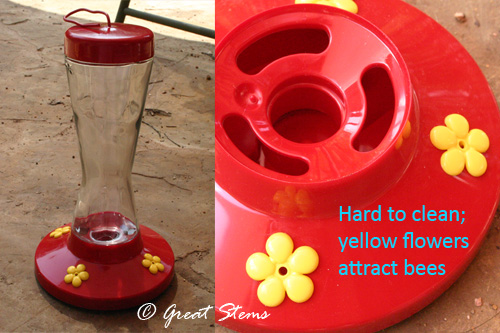
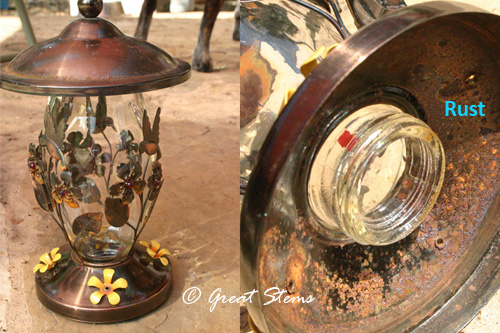
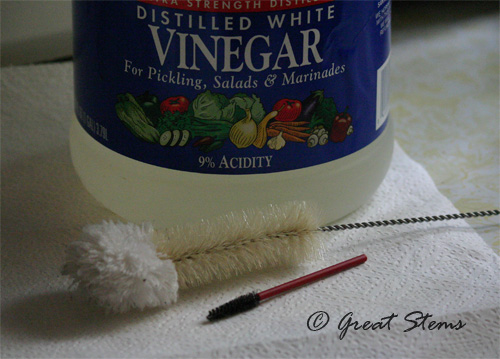
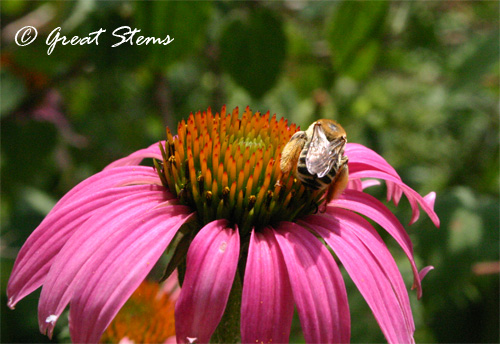
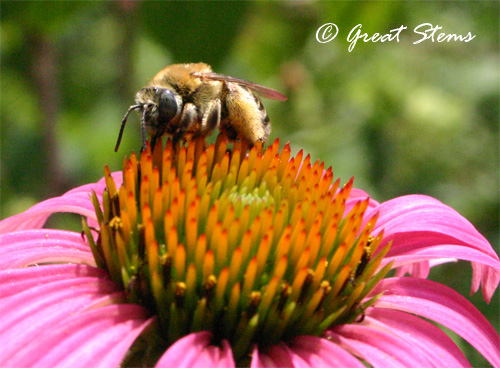
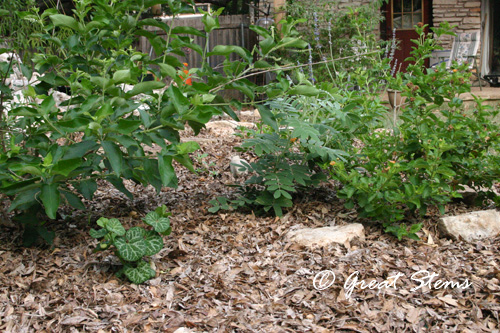 We've been adding plants around the raised
We've been adding plants around the raised 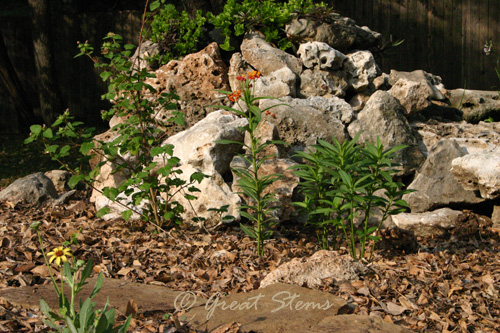
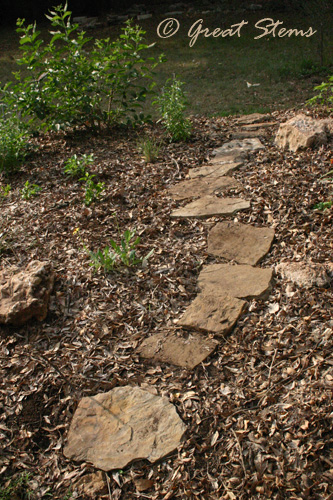

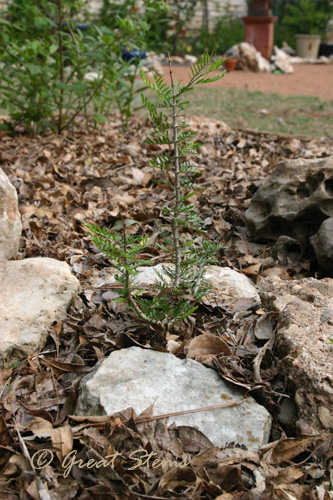 Above is a young Soapbush, Guaiacum angustifolium. It was a treasured find at the last fall Wildflower Center sale, but I didn't get it in the ground right away and I'd almost given it up for dead by the time we made it to spring. However, just look at it now. It seems quite happy in the berm. Someday it will have the most adorable purple flowers.
Above is a young Soapbush, Guaiacum angustifolium. It was a treasured find at the last fall Wildflower Center sale, but I didn't get it in the ground right away and I'd almost given it up for dead by the time we made it to spring. However, just look at it now. It seems quite happy in the berm. Someday it will have the most adorable purple flowers. 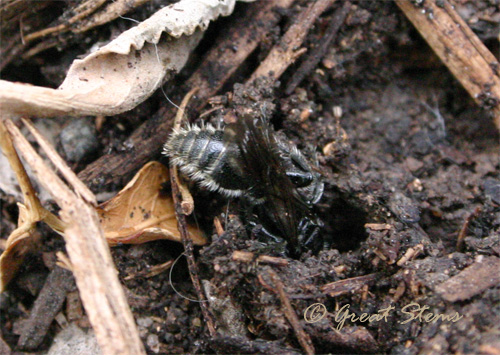 And look, a little mining bee began to work on a nest in a patch of bare earth.
And look, a little mining bee began to work on a nest in a patch of bare earth.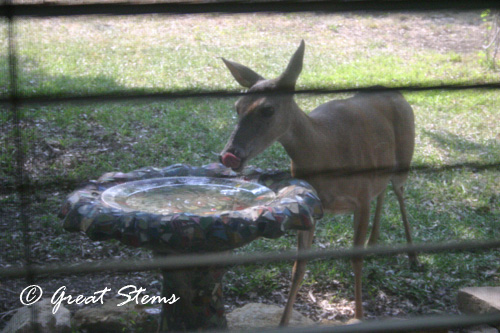
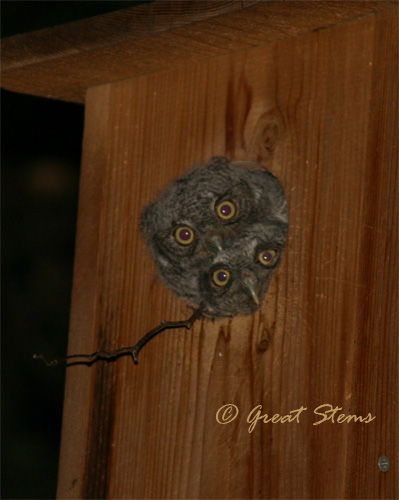
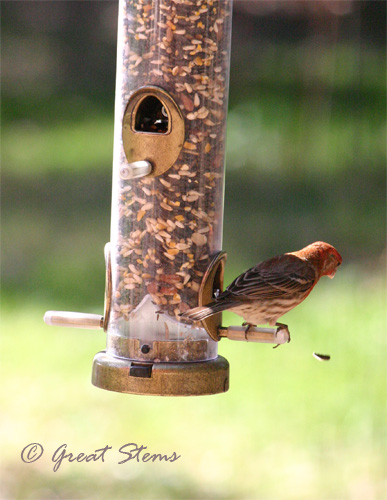
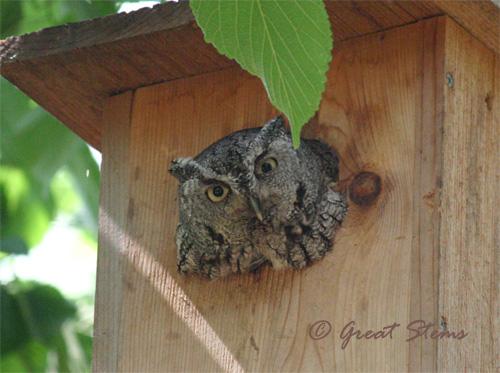
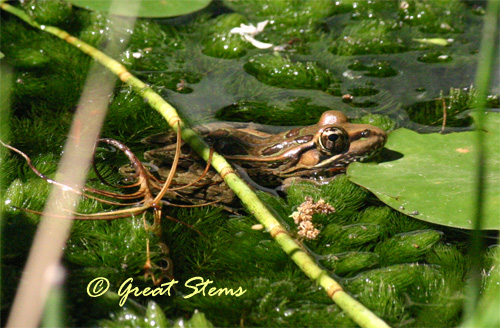
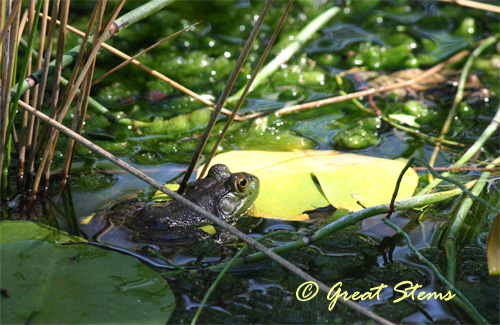
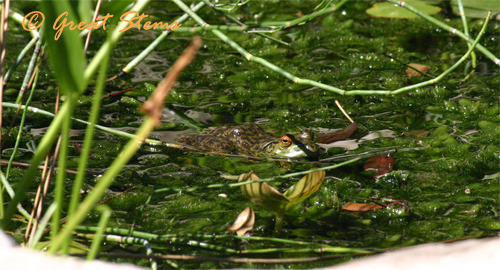
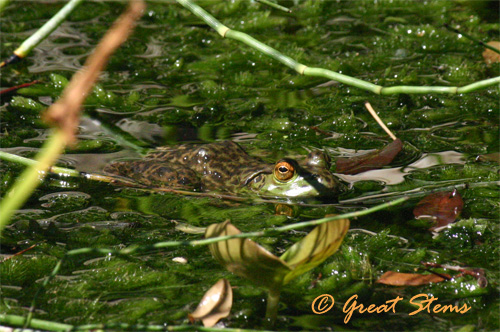
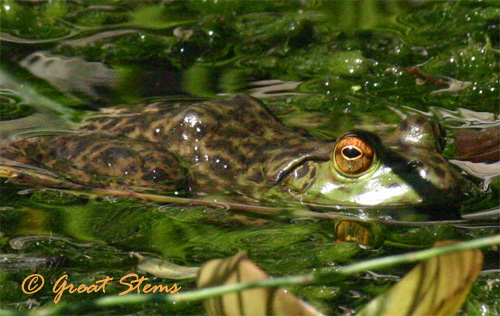
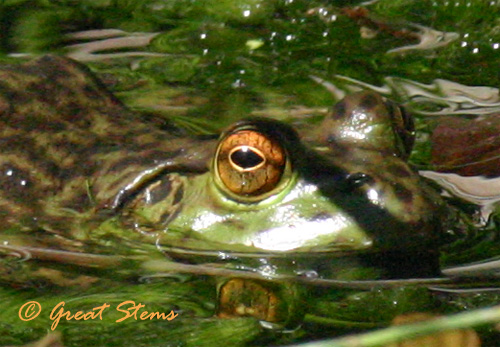
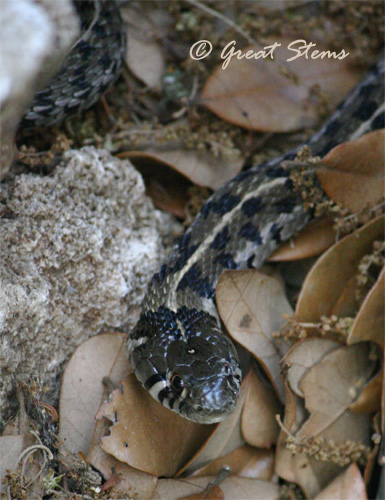
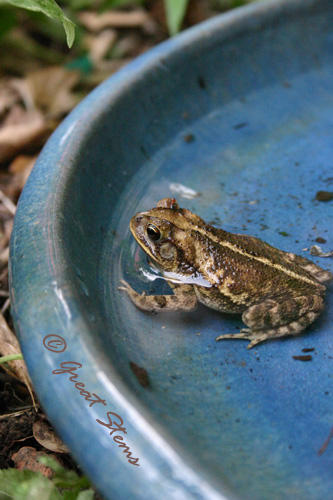
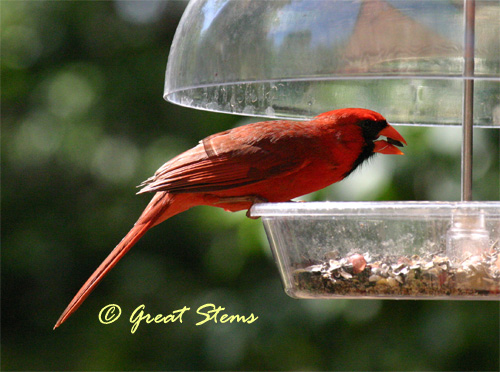
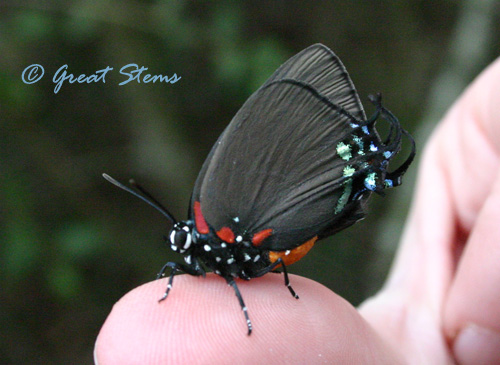
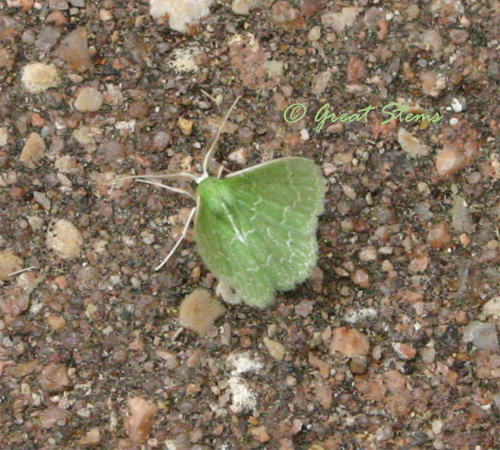
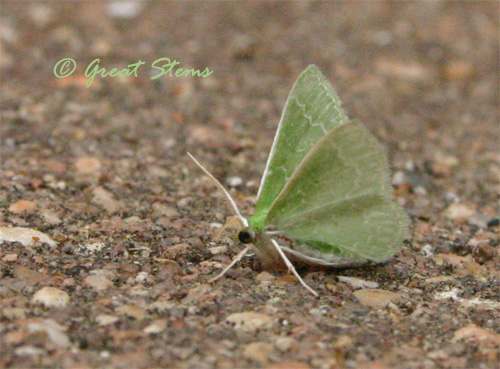
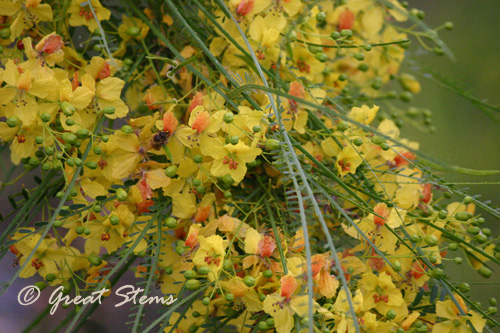
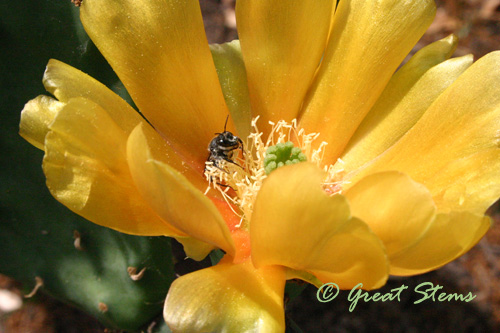
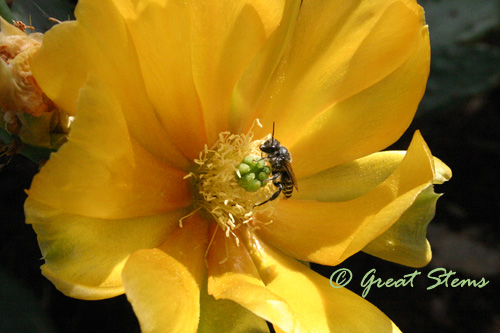
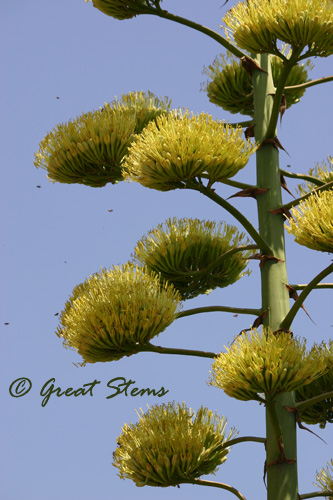
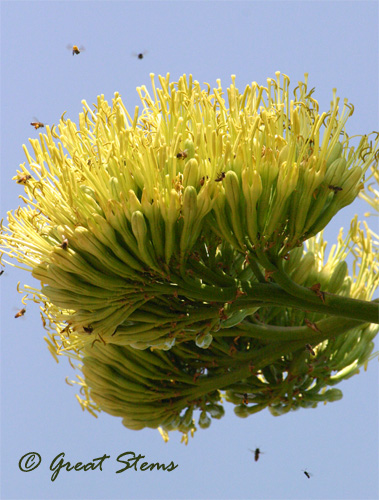
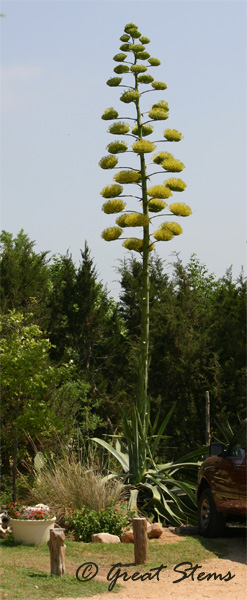
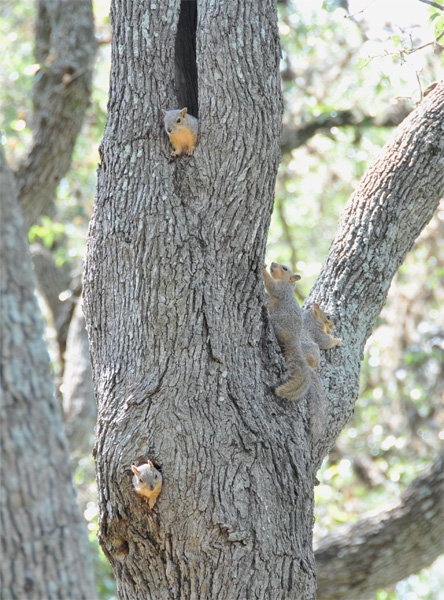
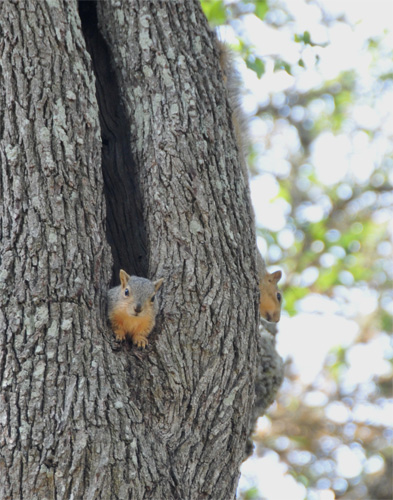
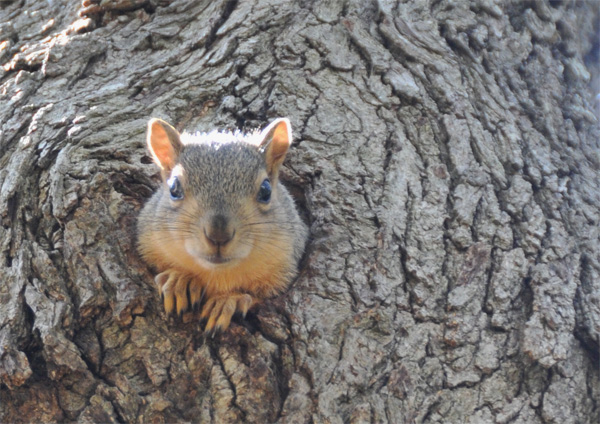
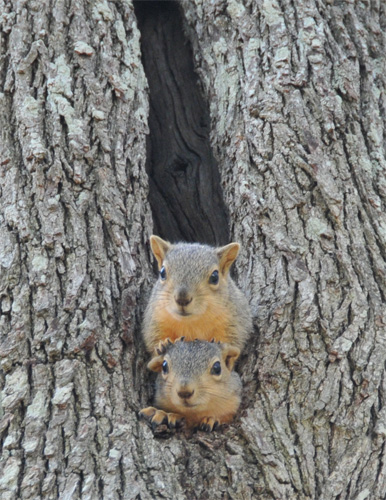
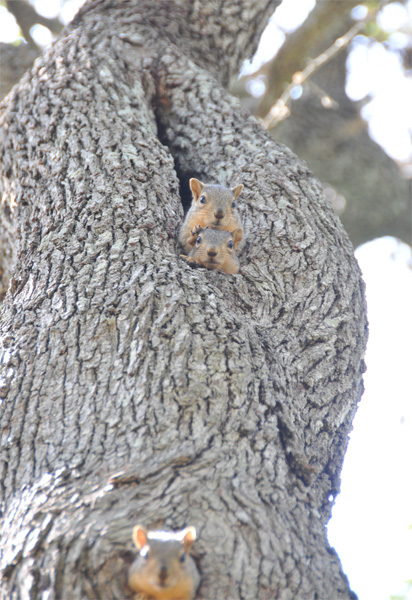
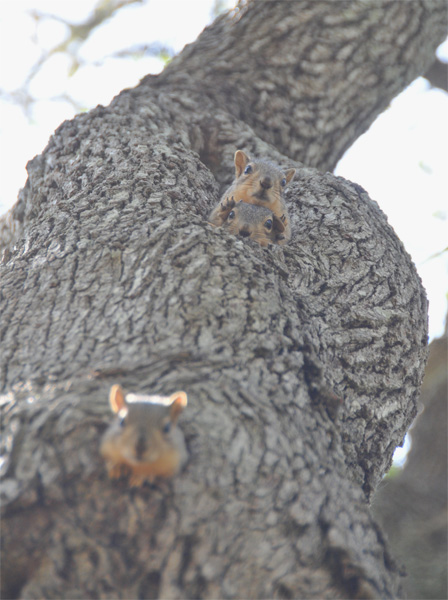
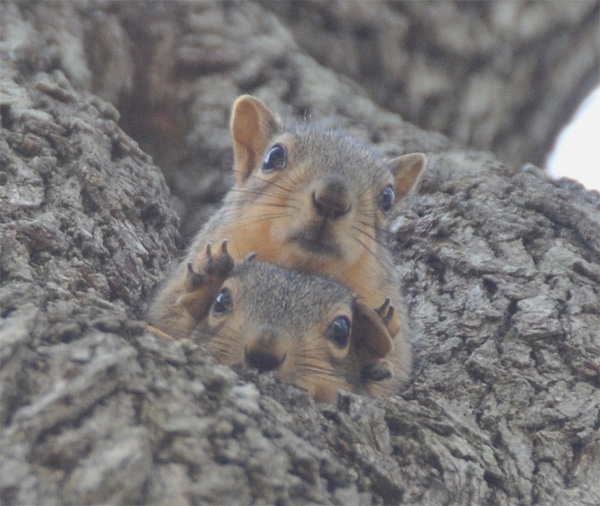
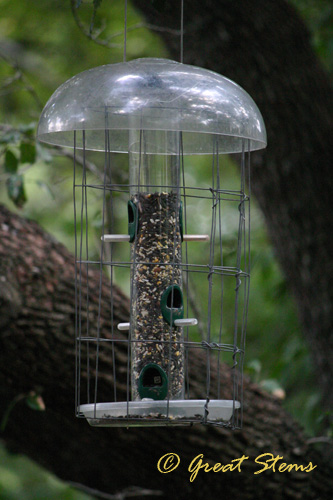
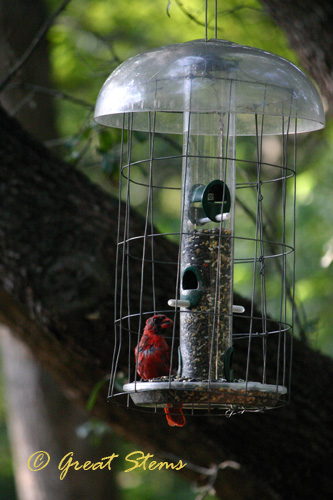
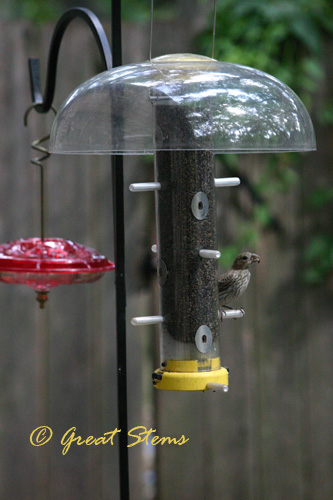
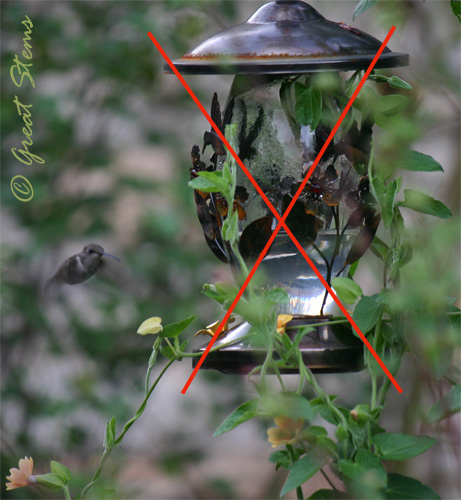
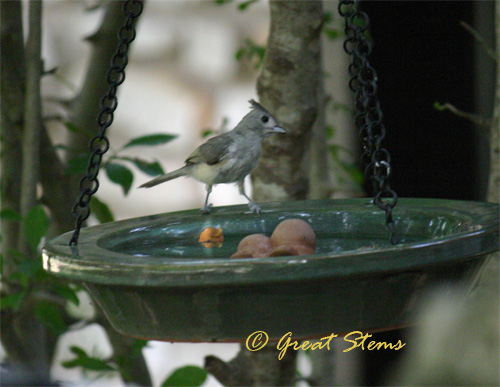
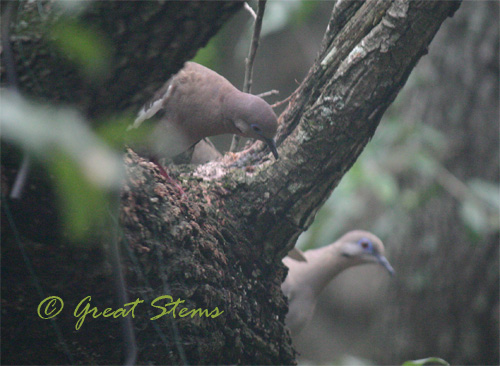
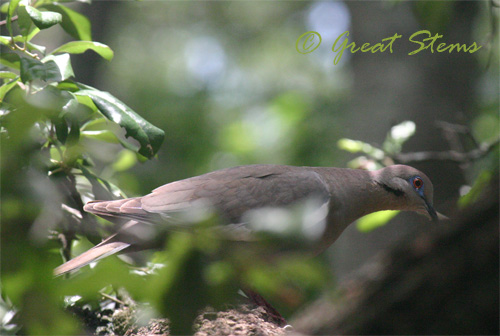
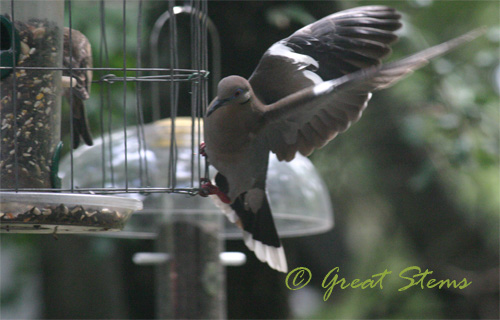
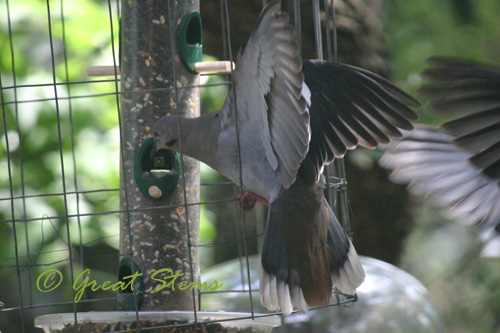
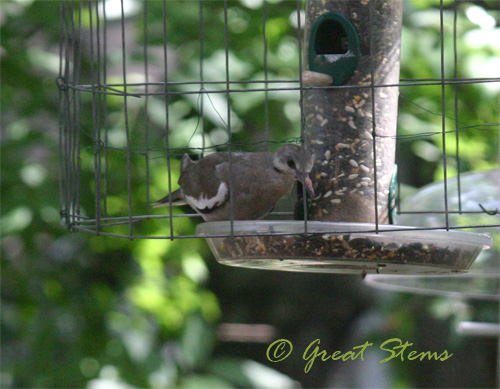
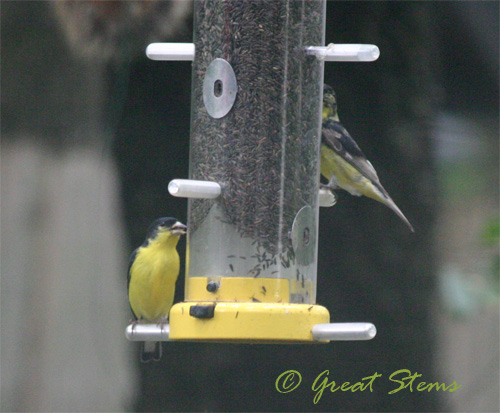
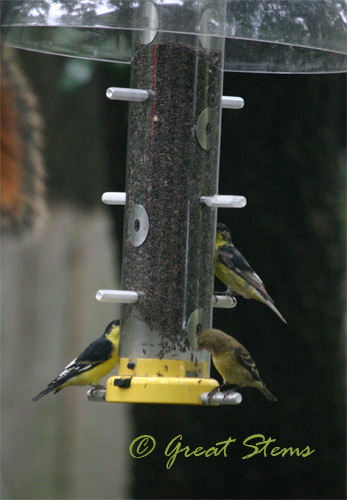
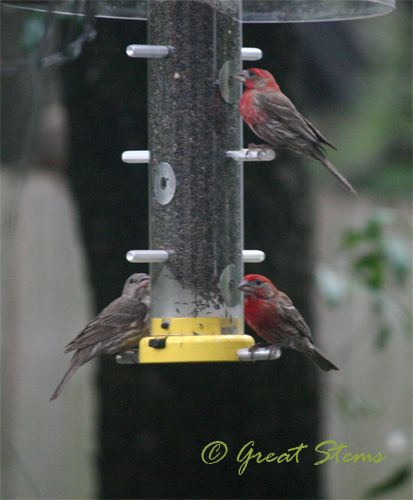
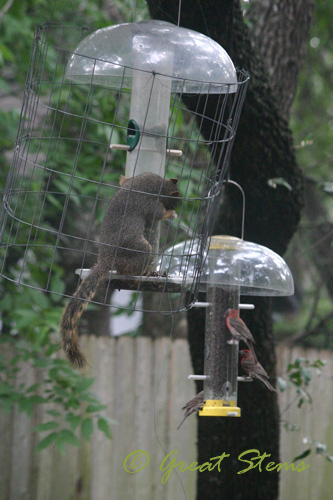
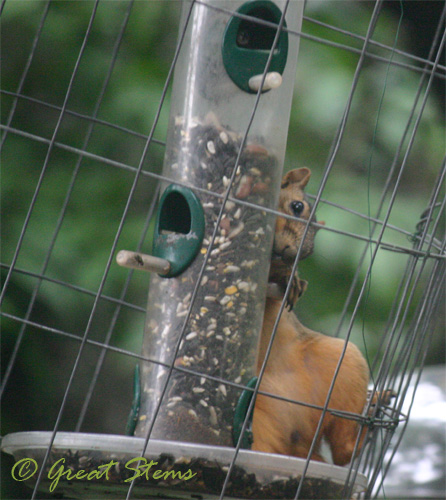
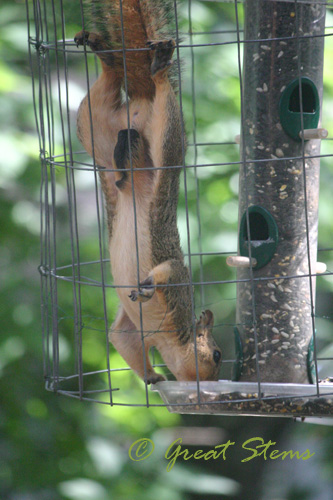
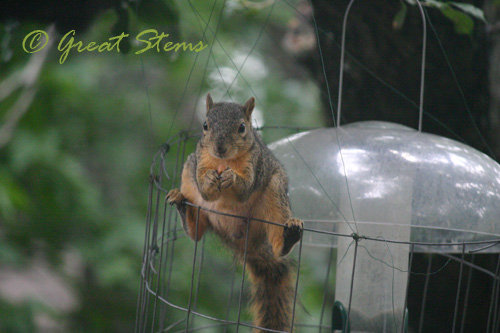
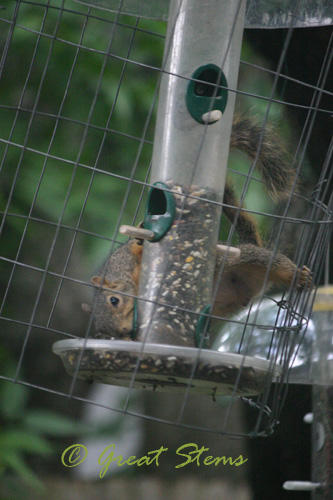
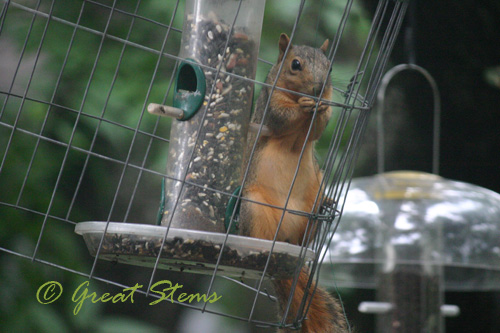 Sometimes birds will share the space with the squirrel... usually on the opposite side of the feeder. The squirrel never seems to care.
Sometimes birds will share the space with the squirrel... usually on the opposite side of the feeder. The squirrel never seems to care.